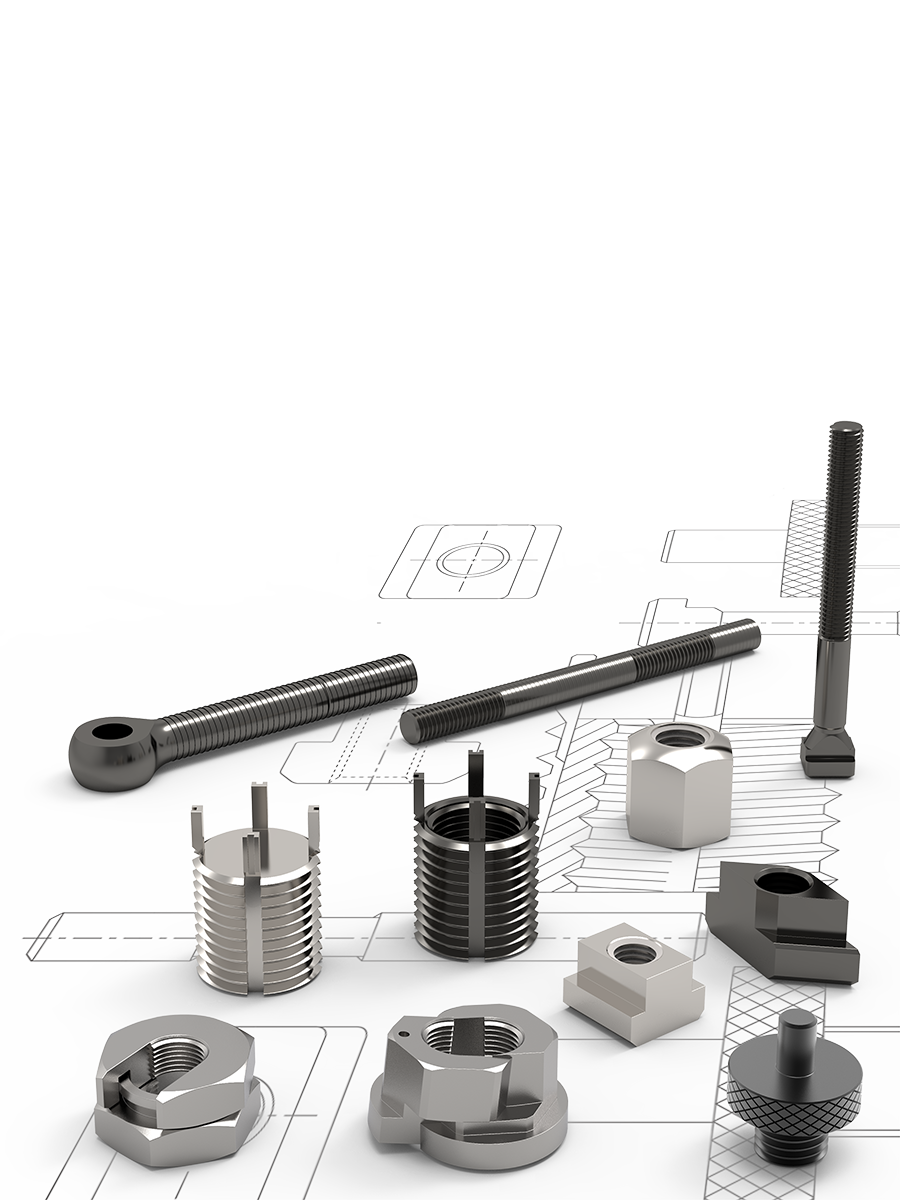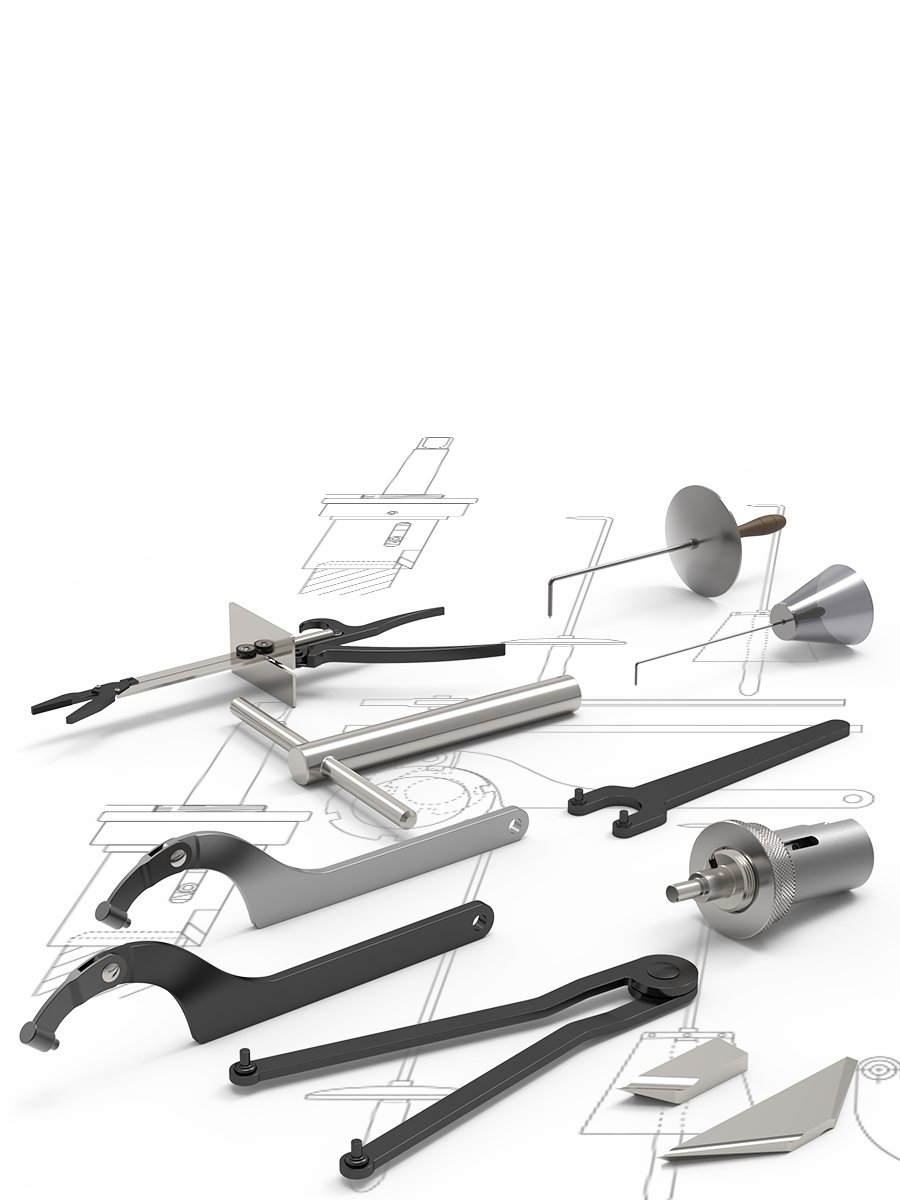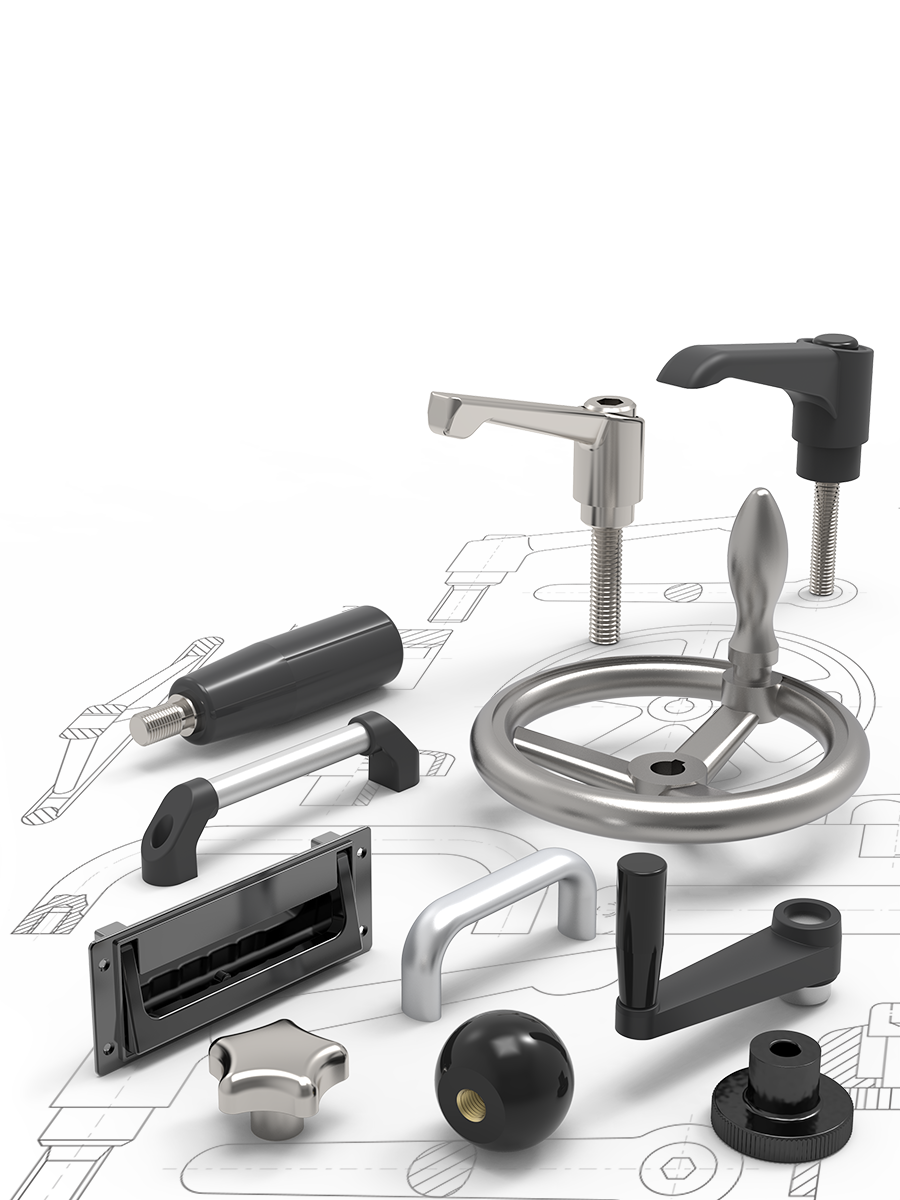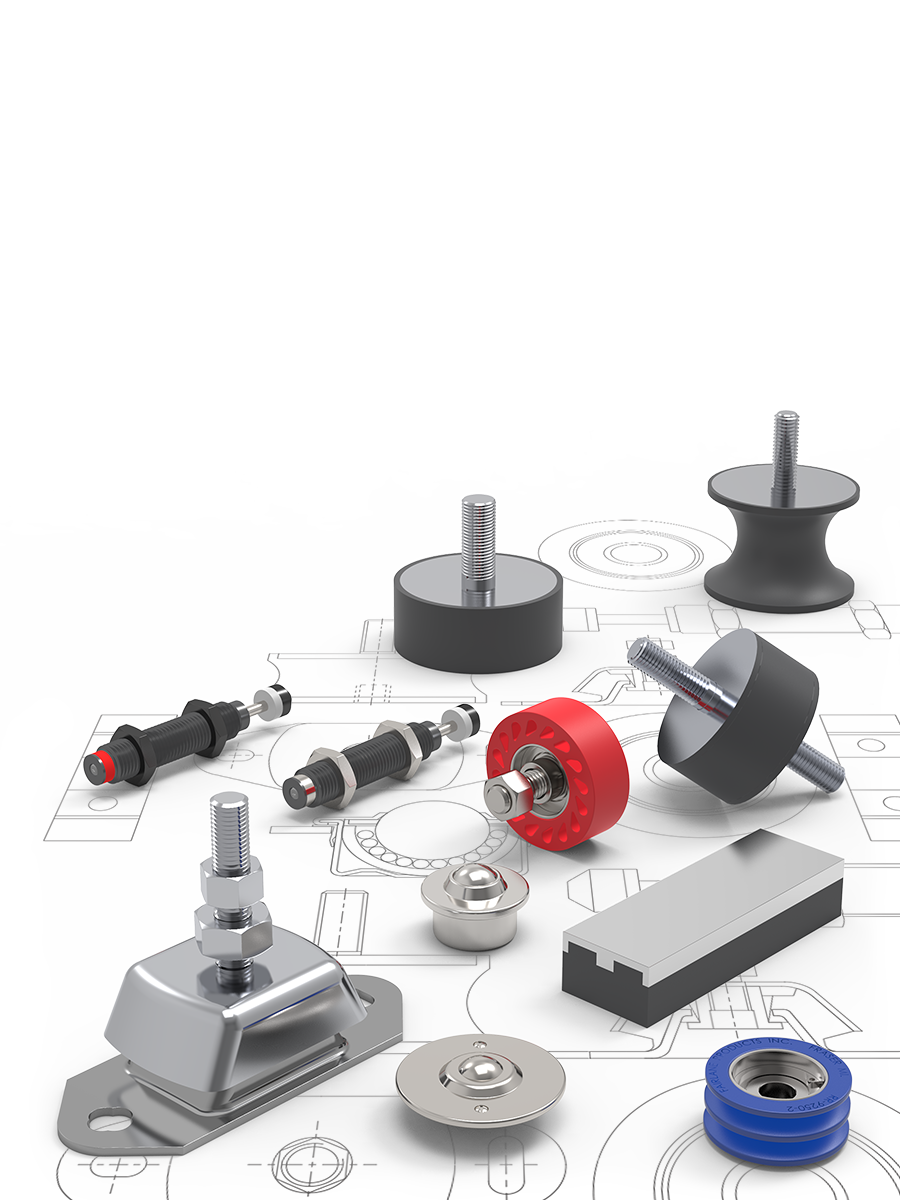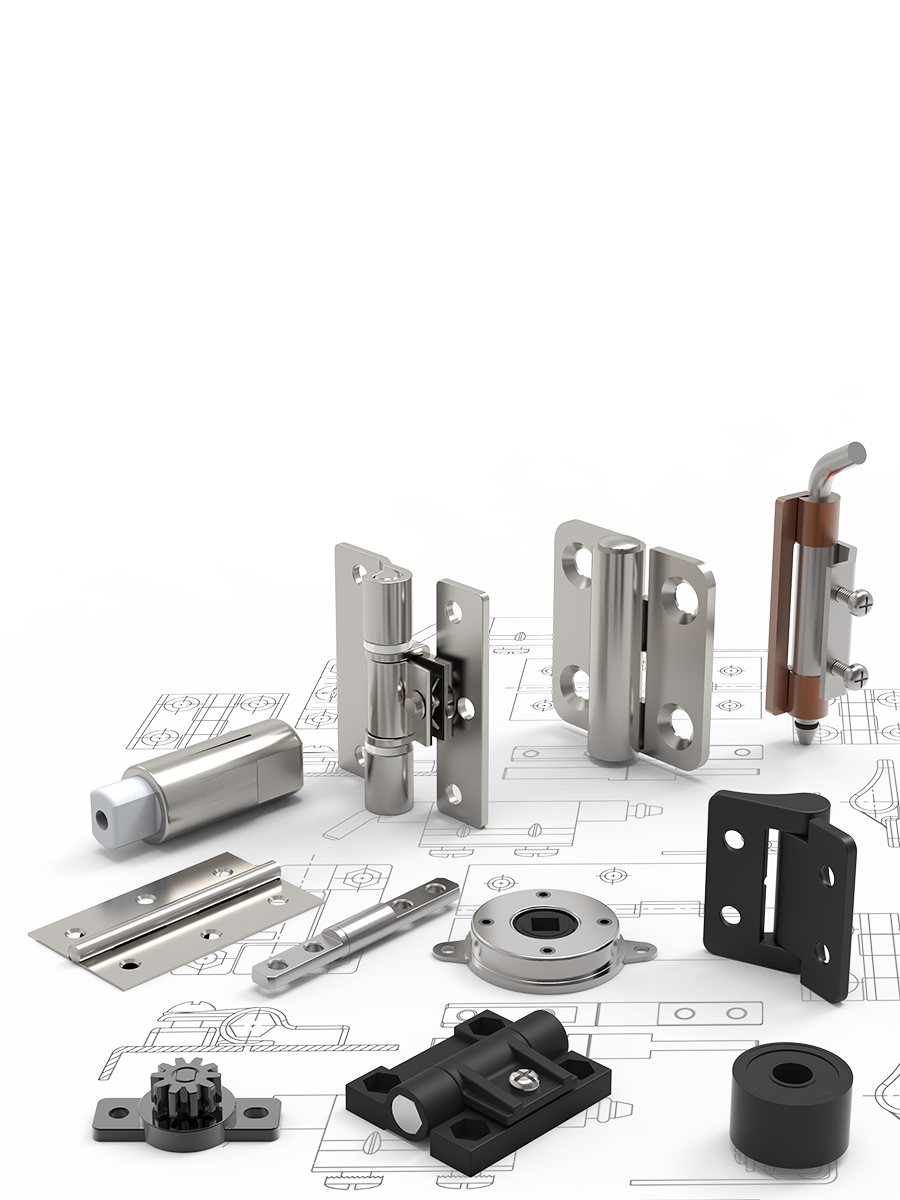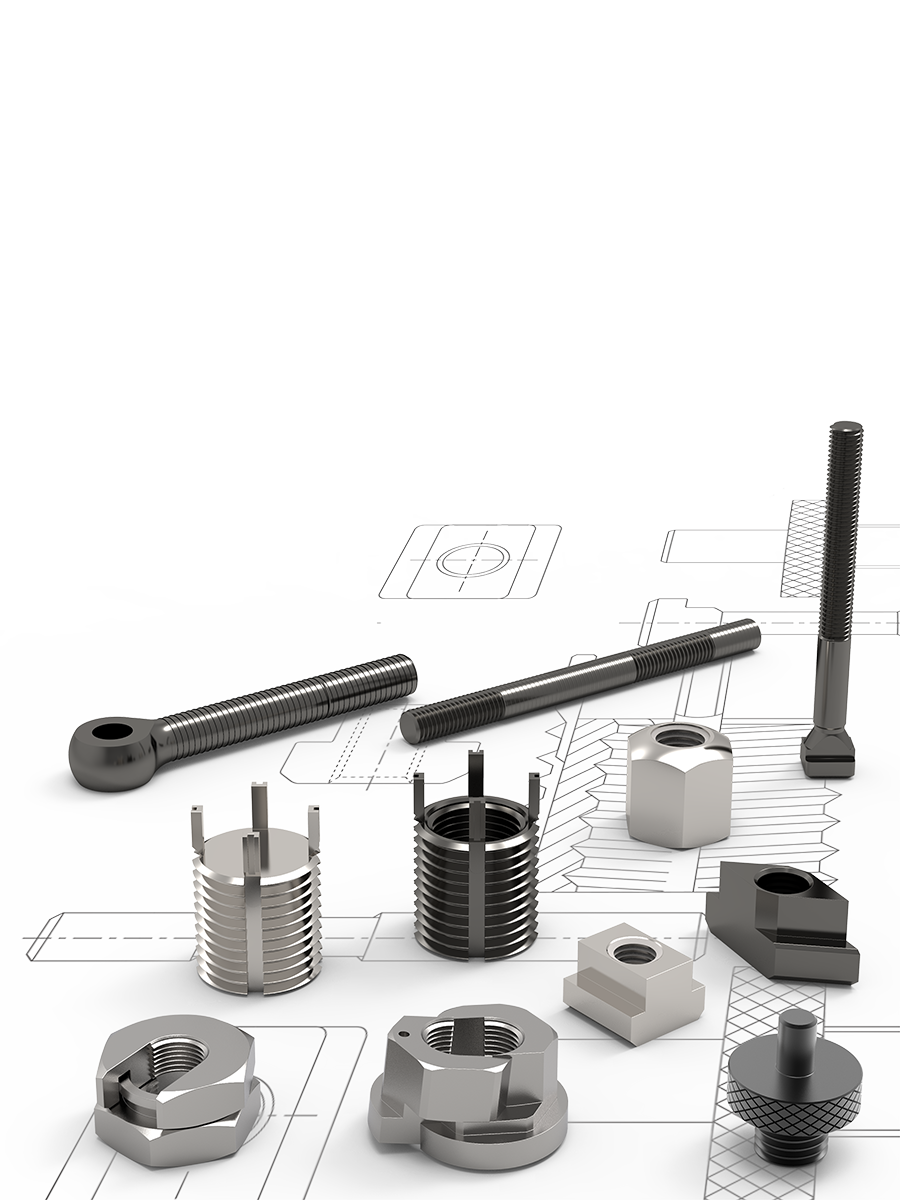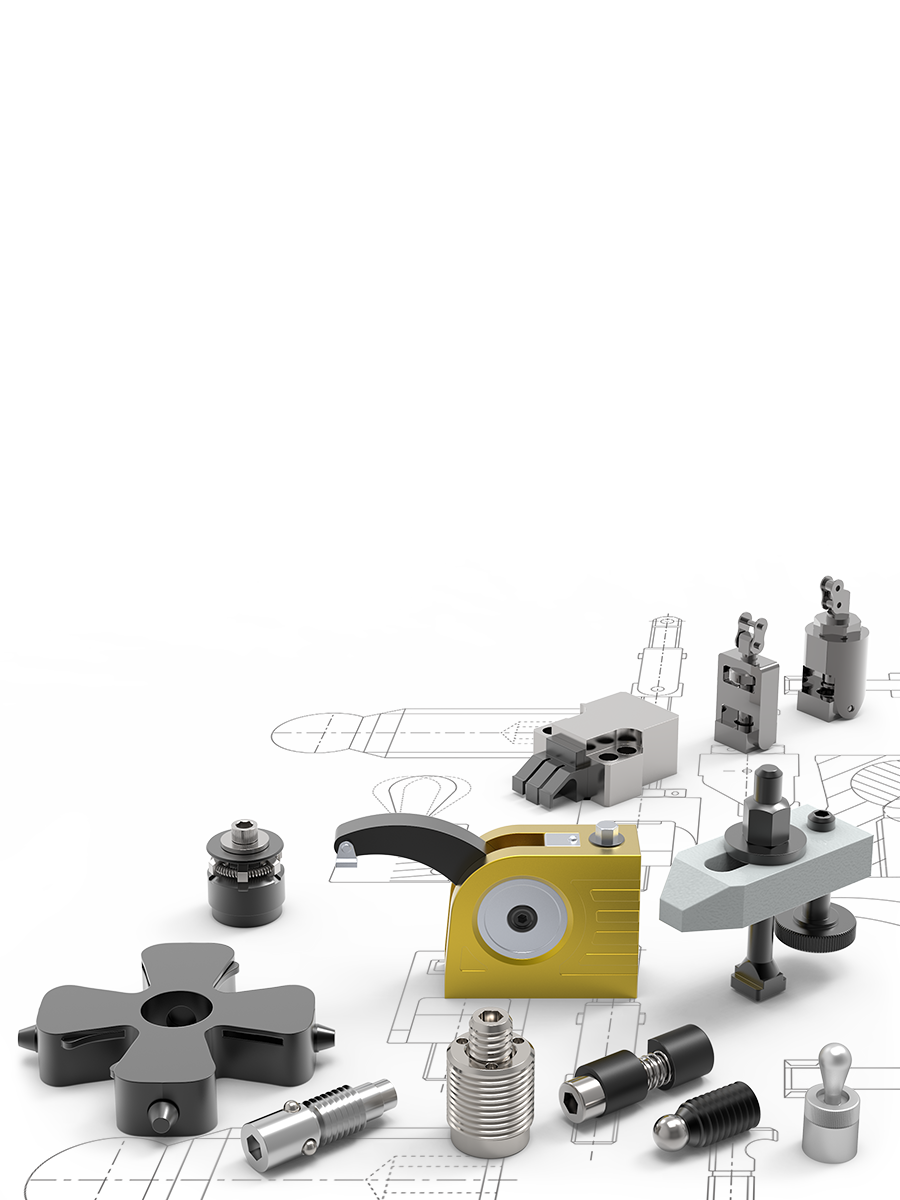Rod Ends
What is...
Wixroyd's comprehensive range of machine elements, standard parts, access components and workholding equipment contains a broad selection of sizes in materials including; stainless steel, steel, die-cast zinc as well as plastic. CAD models of Wixroyd components are available for free visit CAD download. For a free copy of the latest Wixroyd catalogue, the designers indispensable guide to A Range of Endless Possibilities, visit free literature.
Wixroyd are trusted by some of the best known design and manufacturing companies - helping them design, manufacture and assemble their products. Let our technical engineers help solve your unique application challenge.
Features

Heavy Duty Rod Ends: integral spherical plain bearings - series K and series E
Male and female rod ends, maintenance free. These are our most popular range of heavy duty rod ends. Bore diameters 5mm up to 30mm.

Spherical Plain Bearings: steel and stainless steel
65974 is our lowest cost, most popular option spherical bearing. Stainless steel version 65976 requires maintenance. 65974 is maintenance free. Bore diameters 5mm up to 30mm.

Heavy Duty Rod Ends: integral ball bearings - series K and series E
Male and female rod ends. Different bore sizes in relation to the thread size. All require maintenance. Bore diameters 6mm up to 30mm.

Stainless Steel Heavy Duty Rod Ends: integral spherical plain bearings
Male and female rod ends maintenance free.

Low Cost Rod Ends: with spherical plain bearing
These are our most popular male and female rod ends. Maintenance free. Female-bore diameters 5mm up to 12mm. Male-bore diameters 5mm up to 16mm.

Rod Ends with Studs
Steel and Stainless steel, male and female, maintenance free. Sizes M6 up to M16.
Plain Spherical bearings
AÂ Made from Polyamide-PTFE-fibreglass-compound, maintenance free, absorbs any foreign particles.
BÂ Ball made of bearing steel, hardened, ground, polished and hard chromium plated, ensures reliable corrosion protection.
C No Clearance - radial clearance 0-10µm.
DÂ All rod end housings made of gorged steel, tempered, extremely high load resistances.

Ball and roller bearings
A Radial clearance: 10-30µm, low friction
BÂ Â Inner ring made of bearing steel, hardened ball grooves, polished
CÂ Â Shields on both sides protect against rough dirt penetration.
DÂ Â All rod ends housings are made of forged steel, case hardened bearing race.
EÂ Â Low maintenance due to long-term greasing, especially suitable for high speed large swiveling angles or rotating movements

Rod ends and water - Stainless Steel Versions
Most of our rod ends are available in stainless steel as standard. High grade AISI 316 stainless steel available on request.

Rod Ends with Integral Maintenance-free Spherical Plain Bearings
In many cases, Heavy-duty Rod Ends with integral spherical plain bearings are most often used. They are, above all, used for small swivelling or tilting movements at low speeds. They stand out for their high load capacity and can also be used for shock-like loads. The Rod End Ball slides on a plastic bearing shell, consisting of a glass fibre-filled nylon/teflon compound. This design assures a maintenance-free Rod End. Heavy-duty Plain Bearing Rod Ends have slight initial movement friction and virtually no clearance. The plastic material used has another advantage in that, it can absorb many foreign particles so that no damage can occur. The balls of Heavy-duty Rod Ends with Integral Spherical Plain Bearings are hard chrome plated. This reliable corrosion protection ensures, that the function of the rod end will not be affected by a corroded ball surface under humid operating conditions.
Rod Ends with Integral Ball Bearings
This design is especially suitable for high speeds, large swivelling angles or rotating movements with relatively low or medium loads. Prominent technical features are the low bearing friction, long-time greasing as well as the sealing against some dirt penetration (by means of shields on both sides). Under normal operating conditions, the Rod Ends are maintenance-free. Greasing nipples are provided for lubrication, in case of rough operations and maximum loads. To avoid incompatibility with the production lubrication, we recommend lubrication with a calcium-complex-soap-grease. A special heat treatment procedure gives the Rod End housing a raceway hardness, adapted to the anti-friction bearing, ensuring at the same time high stability with changing loads.
Rod Ends with Integral Roller Bearings
This design, based on the structure of a Self-aligning Roller Bearing, is preferably used for high speed, large tilting angles or rotating movements under high loads. Compared to rod ends with ball bearings, Rod Ends with Self-aligning Roller Bearings essentially have higher basic load ratings. This design is equipped with a cage to minimise the rolling friction and heat build-up. These Rod Ends, with long-time lubrication are under normal operating conditions maintenance-free. Greasing nipples are provided for lubrication in case of rough operations and maximum loads. To avoid incompatibility with the production lubrication, we recommend lubricating with a calcium-complex-soap-grease. Shields on both sides limit dirt particles from penetrating into the bearing. The Rod Ends with Roller Bearings are subjected to a special heat treatment to obtain a raceway hardness adapted to the antifriction bearings, ensuring at the same time a high stability with changing loads.
Technical Specs
Rod end bearings load capacity explained
Static load capacity C0(plain bearings)
The static load capacity C0 is the radially acting static load which does not cause any permanent deformation of the components when the spherical bearing or rod end is stationary, (i.e. the load condition without pivoting, swivelling or tilting movements). It is also a precondition here that the operating temperature must be at normal room temperature and the surrounding components must possess sufficient stability.
The values specified in the tables are determined by static tension tests on a representative number of series components at 20°C normal room temperature. The static load capacity may vary with lower or higher temperature depending on the material. In the case of all rod ends with plain bearings, the static load rating refers to the maximum permissible static load of the rod end housing in a tensile direction up to which no permanent deformation occurs at the weakest housing cross-section. The value in the product tables has a safety factor of 1.2 times the tensile strength of the rod ends housing material.
Static load capacity C0(roller and ball bearings)
For our rod ends with roller and ball bearings, the static load rating is the load at which the bearing can operate at room temperature without its performance being impaired as a result of deformations, fracture, or damage to the sliding contact surfaces (max 1/10,000th of the ball diameter).
Dynamic load capacity C (plain bearings)
Dynamic load ratings serve as values for calculation of the service life of dynamically-loaded spherical bearings and rod ends. The values themselves do not provide any information about the effective dynamic load capacity of the spherical bearing or rod end. To obtain this information, it is necessary to take into account the additional influencing factors such as load type, swivel or tilt angle, speed characteristic, max. permitted bearing clearance, max. permitted bearing friction, lubrication conditions and temperature, etc.
Dynamic load capacities depend on the definition used to calculate them. Comparison of values is not always possible owing to the different definitions used by various manufacturers, and because the load capacities are often determined under completely different test conditions.
Dynamic load capacity C (roller and ball bearings)
For our rod ends with roller and ball bearings, the dynamic load capacity is the load at which 90% of a large quantity of identical rod ends reach 1 million revolutions before they fail (due to fatigue of the rolling surfaces.)
Operating Temperatures
Heavy-duty ball and roller bearin rod ends can be used for operating temperatures between -20³C and +120³C. The temperature range of heavy-duty rod ends with integral spherical plain bearing is between -30³C and +60³C, without affecting the load capacity. Higher temperatures will reduce the load capacity taken into account for the calculation of the 'working life' under the temperature factor C2 on page 116.
Loads
The decisive parameters for the selection and calculation of heavy-duty rod ends are size, direction and type of load
Radial or combined loads
The heavy-duty rod ends have been especially designed to cope with high radial loads. They can be used for combined loads, theaxial load share of which does not exceed 20% of the corresponding radial load.
Unilaterally acting load
In this case the load acts only in the same direction, which means that the load area is always in the same bearing section.
Alternately acting load
In case of alternating loads, the load areas facing each other are alternately loaded and/or relieved, which means that the load changes its direction constantly by approximately 180³C.

Swivelling Angle
The swivelling angle is the movement of the rod end from one final position to the other. Half the swivelling angle a3 is used to calculate the service of 'working life'.

Angle of tilt
Thje anfle of tilt, also called setting angle, refers to the movement of the joint ball and/or the inner ring to the rod end axis (in degrees). The tilting angle (a) indicated in the table for the heavy-duty ball and roller bearing rod ends corresponds to the maximum possible movement being limited by the shields on both sides.
It is important that this tilting angle is not exceeded either during installation or operation, as operation, as otherwise the shields may be damaged. For heavy-duty plain bearing rod encds a distiction is made between the tilting angles (a1 and a2).
If the movement is not limited by adjacent components, then angle a1 can fully be used without affecting the rod end capacity. Tilting angle a2 is the movement limit when connecting a forked component.

Nominal service life
The term ‘nominal service life’ is used for heavy-duty ball and roller bearing rod ends and represents the number of swivelling motions or rotations and/or the number of service hours the rod end performs before showing the first signs of material fatigue on the raceway or roller bodies. In view of many factors that are difficult or impossible to assess, the service life of several apparently identical bearings differ under the same operating conditions.
For this reason, the following method for the service life determination of heavy-duty ball and roller rod ends results in a nominal service life being achieved or exceeded by at least 90% of a large quantity of identical rod ends.
Working Life
The term ‘working life’ is used with heavy-duty plain bearing rod ends. It represents the number of swivelling motions or rotations and/ or the number of service hours the heavy duty plain bearing rod end performs before becoming unserviceable due to material fatigue, wear, increased bearing clearance or increase of the bearing friction moment.
The ‘working life’ is not only influenced by the size and the type of load, it is also affected by a number of factors, which are difficult to assess. A calculation of the exact service life is therefore impossible. Field-experienced standard values for the approximate ‘working life’ can nevertheless be determined by using the following calculation procedure which is based on numerous results from endurance test runs and values from decades of experience. The values determined by this formula are achieved, if not exceeded, by the majority of the heavy-duty rod ends.
Heavy-duty rod ends
65700, 65720, 65740, 65760, 65780, 65800, 65742, 65960, 65990, 65992, 65994, 65996
| Over | lcl. | Upper | Lower | Max. | Max. | Upper | Lower | Upper | Lower |
| 6 | +0,012 | 0 | 0,012 | 0,009 | 0 | -0,12 | +0,8 | -1,2 | |
| 6 | 10 | +0,015 | 0 | 0,015 | 0,011 | 0 | -0,12 | +0,8 | -1,2 |
| 10 | 18 | +0,018 | 0 | 0,018 | 0,014 | 0 | -0,12 | +1,0 | -1,7 |
| 18 | 30 | +0,021 | 0 | 0,021 | 0,016 | 0 | -0,12 | +1,4 | -2,1 |
| 30 | 50 | +0,025 | 0 | 0,025 | 0,019 | 0 | -0,12 | +1,4 | -2,7 |
Heavy-duty rod ends
65860, 65820, 65840
| Over | lcl. | Upper | Lower | Max. | Max. | Upper | Lower | Upper | Lower |
| 10 | +0,002 | -0,010 | 0,008 | 0,006 | 0 | -0,12 | +0,8 | -1,2 | |
| 10 | 18 | +0,003 | -0,011 | 0,008 | 0,006 | 0 | -0,12 | +0,8 | -1,2 |
| 18 | 30 | +0,003 | -0,013 | 0,010 | 0,008 | 0 | -0,12 | +1,0 | -1,7 |
| 30 | 50 | +0,003 | -0,015 | 0,012 | 0,009 | 0 | -0,12 | +1,4 | -2,1 |
| 50 | 80 | +0,004 | -0,019 | 0,015 | 0,011 | 0 | -0,15 | +1,8 | -2,7 |
Dimensions and tolerance symbols
d1 = Nominal bore diameter of the inner ring or joint ball
d1mp = mean bore diameter deviation in one plane, arithmetical mean of the largest and smallest bore diameter
Vd1p = Bore diameter variation in one plane, difference between the largest and smallest bore diameter.
Vd1mp of = Mean bore diameter variation, difference between the largest and smallest bore diameter. One inner ring or joint ball.
b18 = Singe inner ring or joint ball width deviation
h, h1, h2 = Single length from the inner ring or ball bore centre to shank end
h8 h18 h82 = Single length variation of a single rod end
Alexia House, Glenmore Business Park
PO19 7BJ Chichester
United Kingdom
0333 207 4497
sales@wixroyd.com
Route via Google Maps
Company registration no: 00496138
Company VAT number GB 408154022


















